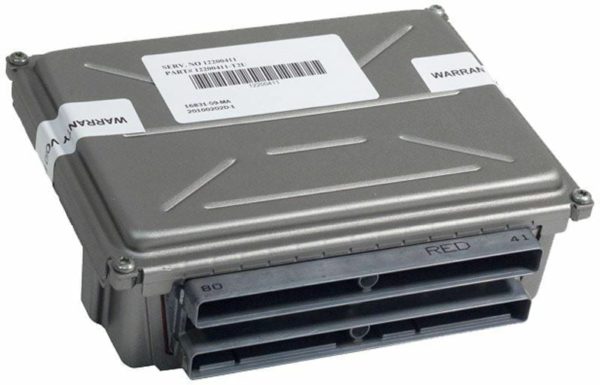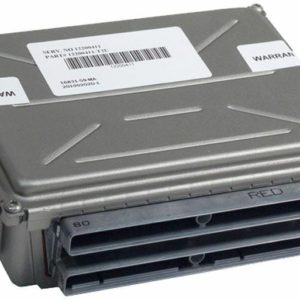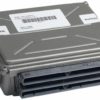The Brain of Your Workhorse: Restoring Your Savana’s Performance
If you rely on your 2001-2002 GMC Savana 3500, you know it’s the backbone of your business or your go-to vehicle for heavy-duty tasks. When it starts acting up, it’s not just an inconvenience—it’s a major problem. Intermittent stalling, erratic shifting, a persistent check engine light, or a complete no-start condition can bring everything to a halt. In my 20+ years as a diagnostician, I’ve seen these symptoms countless times, and very often, the trail leads back to one component: the Powertrain Control Module (PCM).
A Technician’s Real-World Story
“A customer’s 2002 Savana 3500 came into the shop last month on a tow truck. It would crank but not start. The owner had already replaced the fuel pump and crank sensor based on some forum advice, but nothing worked. My scan tool was showing a flurry of communication error codes with various sensors. Instead of chasing ghosts, I went straight to the PCM, located in the rear of the engine bay on these vans. A quick check of the 5-volt reference circuit showed it was dead. The PCM’s internal voltage regulator had failed—a common issue due to heat and vibration. We installed one of our pre-programmed modules, and the van fired right up on the first try. It’s a classic case where the ‘brain’ fails, making the rest of the body look sick.”
Why Does a PCM Fail?
The PCM is the central computer for your engine and transmission. It lives in a harsh environment, constantly exposed to heat, moisture, and vibration. Over two decades, the delicate internal circuits and solder joints can degrade and fail. This isn’t a reflection of poor maintenance; it’s simply the operational reality for an electronic component doing a complex job for years on end.
Symptoms of a Failing 2001-2002 Savana PCM:
A faulty PCM can create some of the most confusing diagnostic headaches. If you’re experiencing any of these, your module is the likely culprit:
- ✔ No-start or hard-starting conditions, especially when the engine is warm.
- ✔ The engine stalls unexpectedly while driving or at idle.
- ✔ The transmission shifts harshly, gets stuck in one gear (limp mode), or shifts at the wrong times.
- ✔ Multiple, unrelated diagnostic trouble codes (DTCs) are present, often for sensors that are perfectly fine.
- ✔ Poor fuel economy and a noticeable loss of engine power.
- ✔ The check engine light is on, but the cause is impossible to pin down.
The Simple, Reliable Solution
Forget expensive diagnostic fees and the hassle of getting your vehicle towed to a dealership for programming. This PCM is the direct, effective solution you need. We take a genuine OEM module and test it rigorously to ensure it meets or exceeds original factory specifications. The critical difference is our service: we program it specifically for your van before it ever leaves our facility.
How It Works:
- You purchase this PCM.
- You provide us with your vehicle’s 17-digit VIN (Vehicle Identification Number).
- We use your VIN to flash the module with the latest, most stable GM-approved software for your exact vehicle configuration. This ensures perfect compatibility with your engine, transmission, and options.
- We ship the ready-to-install module directly to you.
Installation is straightforward. On your Savana 3500, the PCM is located in the left-hand (driver’s side) rear of the engine compartment. Simply disconnect the battery, unplug the connectors from your old module, swap in the new one, and reconnect everything. In most cases, no additional security relearn or complex procedures are needed. You get back on the road faster.
Guaranteed Compatibility
This module is a direct replacement for several original equipment part numbers. If your existing module has one of the following numbers on its label, this is the correct part for you:
- ✔ 12576160
- ✔ 12200411
- ✔ 12201281
- ✔ 52369718
This PCM also fits a wide range of other 2001-2002 GM trucks, vans, and SUVs, including the Silverado, Sierra, Tahoe, Yukon, and Express. Trust in a solution backed by years of hands-on expertise to solve your vehicle’s electronic issues correctly the first time.


